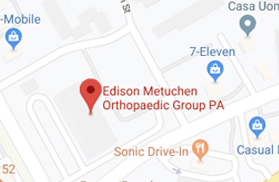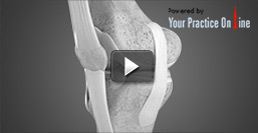Arthroscopic Wrist Surgery
The wrist is comprised of two bones in the forearm, the radius and ulna, and eight tiny carpal bones in the palm. The bones meet to form multiple large and small joints. A wrist fracture refers to a break in one or more of these bones.
Types of wrist fracture include:
- Simple wrist fractures in which the fractured pieces of bone are well aligned and stable.
- Unstable fractures are those in which fragments of the broken bone are misaligned and displaced.
- Open (compound) wrist fractures are severe fractures in which the broken bones cut through the skin. This type of fracture is more prone to infection and requires immediate medical attention.
Causes
Wrist fractures may be caused due to fall on an outstretched arm, vehicular accidents or workplace injuries. Certain sports such as football, snowboarding, or soccer may also be a cause of wrist fractures. Wrist fractures are more common in people with osteoporosis, a condition marked by brittleness of the bones.
Signs and Symptoms
Common symptoms of a wrist fracture include severe pain, swelling, and limited movement of the hand and wrist. Other symptoms include:
- Deformed or crooked wrist
- Bruising
- Numbness
- Stiffness
Diagnosis
Your doctor performs a preliminary physical examination followed by imaging tests such as an X-ray of the wrist to diagnose a fracture and check alignment of the bones. Sometimes a CT scan may be ordered to gather more detail of the fracture, such as soft tissue, nerves or blood vessel injury. MRI may be performed to identify tiny fractures and ligament injuries.
Your doctor will order a bone scan to identify stress fractures due to repeated trauma. The radioactive substance injected into the blood gets collected in areas where the bone is healing and is detected with a scanner.
Treatment
Your doctor may prescribe analgesics and anti-inflammatory medications to relieve pain and inflammation.
Fractures that are not displaced are treated with either a splint or a cast to hold the wrist in place.
If the wrist bones are displaced, your surgeon may perform fracture reduction to align the bones. This is performed under local anesthesia. A splint or a cast is then placed to support the wrist and allow healing.
Surgery
Surgery is recommended to treat severely displaced wrist fractures and is carried out under the effect of general anesthesia.
External fixation, such as pins may be used to treat the fracture from the outside. These pins are fixed above and below the fracture site and are held in place by an external frame outside the wrist.
Internal fixation may be recommended to maintain the bones in proper position while they heal. Devices such as rods, plates and screws may be implanted at the fracture site.
Crushed or missing bone may be treated by using bone grafts taken from another part of your body, bone bank or using a bone graft substitute.
During the healing period, you may be asked to perform some motion exercises to keep your wrist flexible. Your doctor may recommend hand rehabilitation therapy or physical therapy to improve function, strength and reduce stiffness.
Risks and Complications
As with any procedure, wrist fracture surgery involves certain risks and complications. They include:
- Infection
- Residual joint stiffness
- Arthritis
Arthroscopic Wrist Surgery
Your wrist is a complex joint made up of eight small bones called carpal bones. These bones are supported by connecting ligaments. Various conditions can affect your wrist joint such as carpal tunnel syndrome, osteoarthritis and others.
Wrist arthroscopy is a minimally invasive surgical procedure performed to view, diagnose, and treat problems of your wrist joint.
Indications
Wrist arthroscopy may be necessary to help in diagnosing:
- stiffness
- unexplained pain
- swelling and
- giving way or popping of the joint
Wrist arthroscopy is also used to treat conditions such as:
- arthritis
- chronic wrist pain
- wrist fractures
- ligament tears
- ganglion cysts and
- carpel tunnel syndrome
Surgical procedure
Wrist arthroscopy is usually performed under regional anesthesia. You will be awake but will feel no sensation in your hand and arm during your procedure. You may be given a sedative to keep you relaxed.
Your doctor will make one or two small half-inch incisions, known as portals, on the back of your wrist. The portals are placed in specific locations on the wrist, depending on the areas that need to be visualized. The arthroscope and special surgical instruments are inserted into your wrist through these portals. The arthroscope is a thin tube with a camera, lens and light source. Your doctor will be guided by the images relayed from the arthroscope onto a video monitor throughout your procedure. Your doctor will perform any necessary repairs depending on your particular problem.
After the procedure, the portals are closed with small stitches and a dressing is applied. You may be instructed to wear a splint for a short time after the procedure.
Postoperative Care
- Keep your hand elevated above the level of your heart for the first 2 to 3 days after your procedure
- Keep your bandage clean, dry, and intact
- You may apply ice over the operated area to reduce swelling and discomfort
- You will be instructed on special exercises to regain strength and mobility of your wrist
- You will be prescribed pain medications to relieve any pain
Advantages
Recovery following wrist arthroscopy is generally more comfortable for the patient than an open surgery which requires a larger incision. There is usually less pain following the procedure and the healing time is faster when compared to an open procedure. Wrist arthroscopy is performed as a day surgery where most patients are able to go home within several hours after their surgery.
Risks and complications
Complications are fairly rare with wrist arthroscopy. However, some of the possible complications that can occur include scarring, bleeding, swelling, infection, numbness and injury to adjoining structures.
 Menu
Menu






